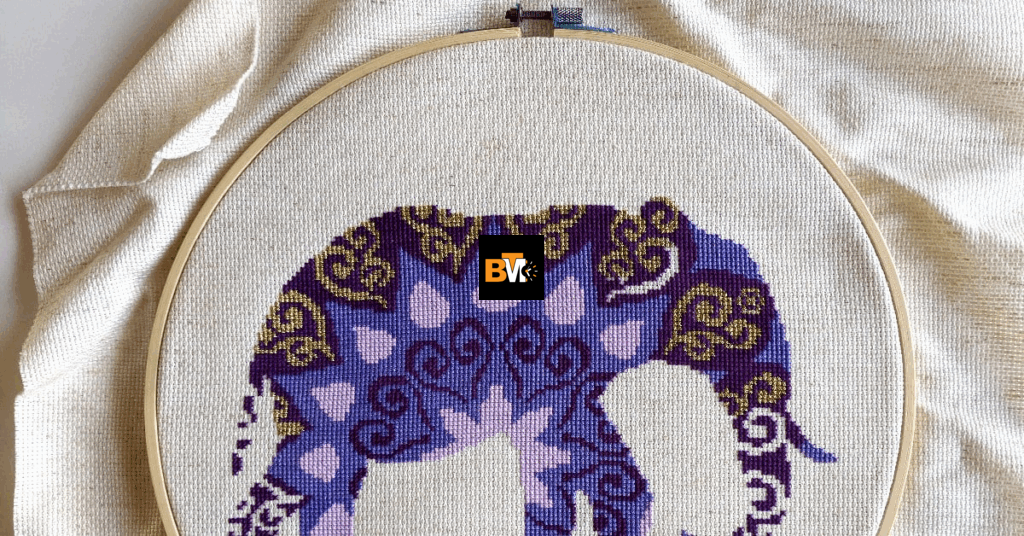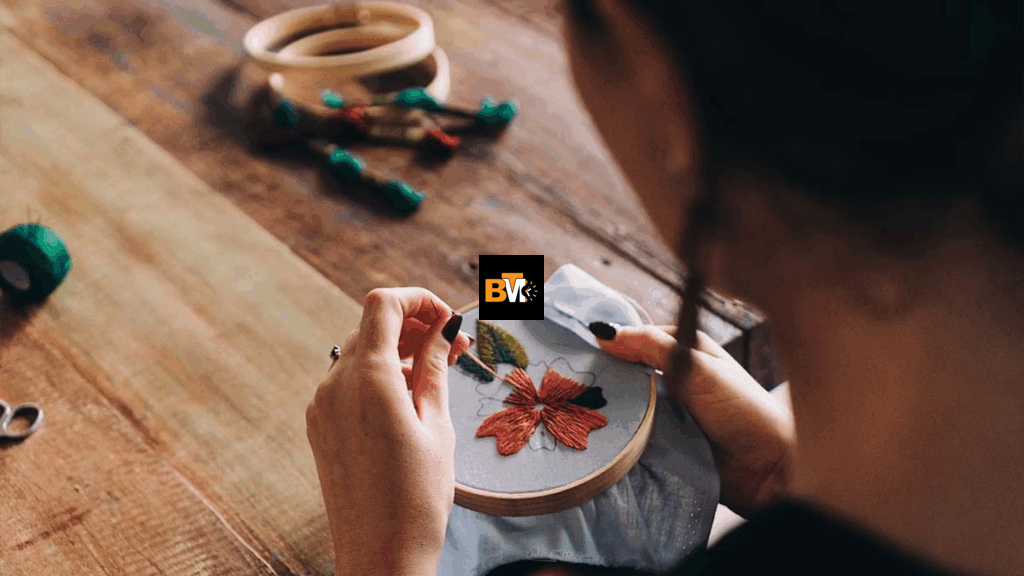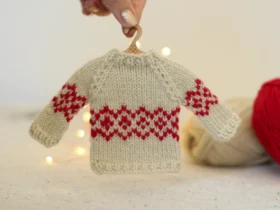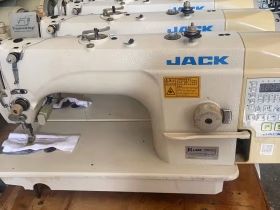Whether you’re just starting out or you’ve been stitching for years, having the right embroidery hoop can make a big difference in your work. The best embroidery hoops help you keep fabric tight, reduce hand fatigue, and support beautiful, even stitches. Let’s explore everything you need to know—from materials and sizes to the top hoops for beginners and pros alike.
What Is an Embroidery Hoop?
An embroidery hoop is a simple yet essential tool used to keep your fabric taut while you stitch. It consists of two rings: an inner ring and an outer ring. You place your fabric over the inner ring, then press the outer ring down on top, tightening it so the fabric stays stretched and firm. This keeps your stitches even and makes your work easier and more enjoyable.
There are many types of embroidery hoops available today—ranging in sizes, shapes, and materials like wood, plastic, or even metal. Some are designed for hand embroidery, while others are better suited for machine embroidery. Choosing the right one depends on your project, fabric type, and personal comfort.
Why Picking the Right Hoop Matters
Choosing the best embroidery hoop isn’t just about convenience—it can actually improve your stitching quality. A good hoop keeps the fabric from sagging or puckering, which helps you create smooth, uniform stitches. If the fabric is too loose, your thread may pull unevenly. If it’s too tight, it could stretch or damage the fabric.
The wrong hoop can also lead to discomfort or even injury over time. If a hoop is too heavy, poorly designed, or doesn’t grip the fabric well, you might experience hand strain. Picking the right embroidery hoop will make your embroidery easier, faster, and more enjoyable.
Top 5 Best Embroidery Hoops for Every Stitcher
With so many choices, it’s easy to feel overwhelmed. To help you decide, here are the five best embroidery hoops for every type of stitcher—from beginner to pro. We picked these based on comfort, quality, and popularity among users.

Best Hoop for Beginners
Dritz Plastic Embroidery Hoop (5-inch)
This hoop is lightweight, budget-friendly, and super easy to use. It’s perfect for anyone just starting out with hand embroidery. The edges are smooth and gentle on hands, and the screw is simple to tighten. Plus, the hoop holds fabric firmly, even for beginners.
Best Wooden Embroidery Hoop
Morgan No-Slip Wooden Hoop (7-inch)
Made from high-quality beechwood, this hoop is sturdy, smooth, and long-lasting. It features a special no-slip design that helps keep your fabric tight. Ideal for traditional hand embroidery, crewel, or cross-stitch, this hoop is loved for its durability and natural feel.
Best Plastic Embroidery Hoop
Susan Bates Hoop-La (6-inch)
This colorful plastic hoop is made with a unique lip-locking system that grips the fabric tightly. It’s especially good for slippery or stretchy fabrics. The lightweight design makes it easy to hold, and it’s available in multiple sizes. A popular choice among modern crafters.
How to Choose the Best Embroidery Hoop
When selecting the best embroidery hoop, you should consider several key factors: comfort, material, size, grip strength, and type of project. A good hoop should hold your fabric tight without damaging it and be easy to handle for long stitching sessions.
Here are a few questions to ask yourself before buying:
- What kind of fabric will I be using?
- Is this for hand embroidery or machine embroidery?
- Do I need a hoop that can stay tight for long periods?
- How big is my project?
If you’re working on large pieces, look for bigger hoops or consider a scroll frame. For small, detailed work, smaller hoops give better control. You may even want multiple hoops in different sizes depending on your projects.
What Size Hoop Should I Use?
Choosing the right size embroidery hoop depends on the size of your design and how much space you need around your stitching area. Most beginners start with a 5-inch to 7-inch hoop, which works well for small to medium-sized designs.
For larger projects, 9-inch or 12-inch hoops may be more comfortable. However, keep in mind that larger hoops can be harder to hold for long periods. If you’re doing very detailed work, smaller hoops—like 4 inches—can help you keep your stitches precise.
Also, remember that your fabric should be at least 2 inches larger than your hoop on all sides, so it fits well and stays taut.
Hoop Materials: Wood, Plastic, or Metal?
The material of your embroidery hoop can impact your stitching experience. Each type has its own pros and cons. Here’s a breakdown of the most common materials:

Wooden Hoops
Wooden hoops are a classic choice and favored for their natural feel and solid grip. They’re lightweight and typically made from durable woods like beech or bamboo. They’re great for most hand embroidery techniques and provide a smooth surface that’s gentle on fabric.
Pros:
- Natural, lightweight feel
- Strong fabric grip
- Aesthetic appeal
Cons:
- May loosen over time if not tightened regularly
- Can warp if exposed to moisture
Plastic Hoops
Plastic embroidery hoops are affordable, colorful, and easy to clean. Some models come with a rubberized edge or a locking lip that holds the fabric in place better than wood.
Pros:
- Durable and easy to clean
- Available in many sizes and colors
- Often more affordable than wooden hoops
Cons:
- Can feel slippery in hands
- May not grip fabric as tightly as wood, depending on design
Tips to Keep Fabric Tight in the Hoop
Keeping your fabric tight in the hoop is crucial for clean stitches and an enjoyable stitching process. Here are a few simple tips:
- Use a hoop that matches your fabric weight. Thin fabric may need a tighter hoop grip than thick linen or canvas.
- Tighten the screw after placing the fabric. Once your fabric is in place, gently pull it taut and tighten the screw until it holds firmly.
- Check fabric tightness as you stitch. Fabric can loosen over time, especially with frequent handling.
- Wrap the inner hoop with twill tape or bias tape. This increases grip and keeps fabric from slipping.
- Avoid over-tightening. Too much tension can distort your fabric or even damage the hoop.
Best Brands for Embroidery Hoops
Some brands consistently deliver quality hoops that stitchers trust. Whether you’re just starting out or are a seasoned stitcher, these names are worth knowing:
- Dritz – Ideal for beginners; affordable and easy to use.
- Morgan – Known for no-slip wooden and plastic hoops with strong grip.
- Susan Bates – A favorite for plastic hoops with lip-lock technology.
- Clover – Offers premium-quality hoops, including unique embroidery frames.
- Bohin – Known for their professional-grade wooden hoops, especially for fine embroidery.
Each brand offers a range of hoop sizes and styles, so you can experiment to find what suits your stitching style best.
The Bottom Line
Embroidery hoops might seem simple, but they play a huge role in your stitching success. Choosing the right hoop will not only make your embroidery look better—it’ll make the process more enjoyable and comfortable. Whether you go for a classic wooden hoop, a colorful plastic one, or a sturdy no-slip model, the best embroidery hoops are the ones that suit your projects and hands.
Start small if you’re new, and don’t be afraid to try a few different types. Over time, you’ll find your favorite that helps bring your stitches to life.







Leave a Reply